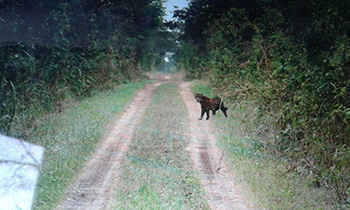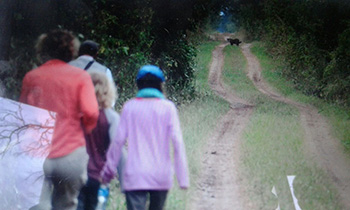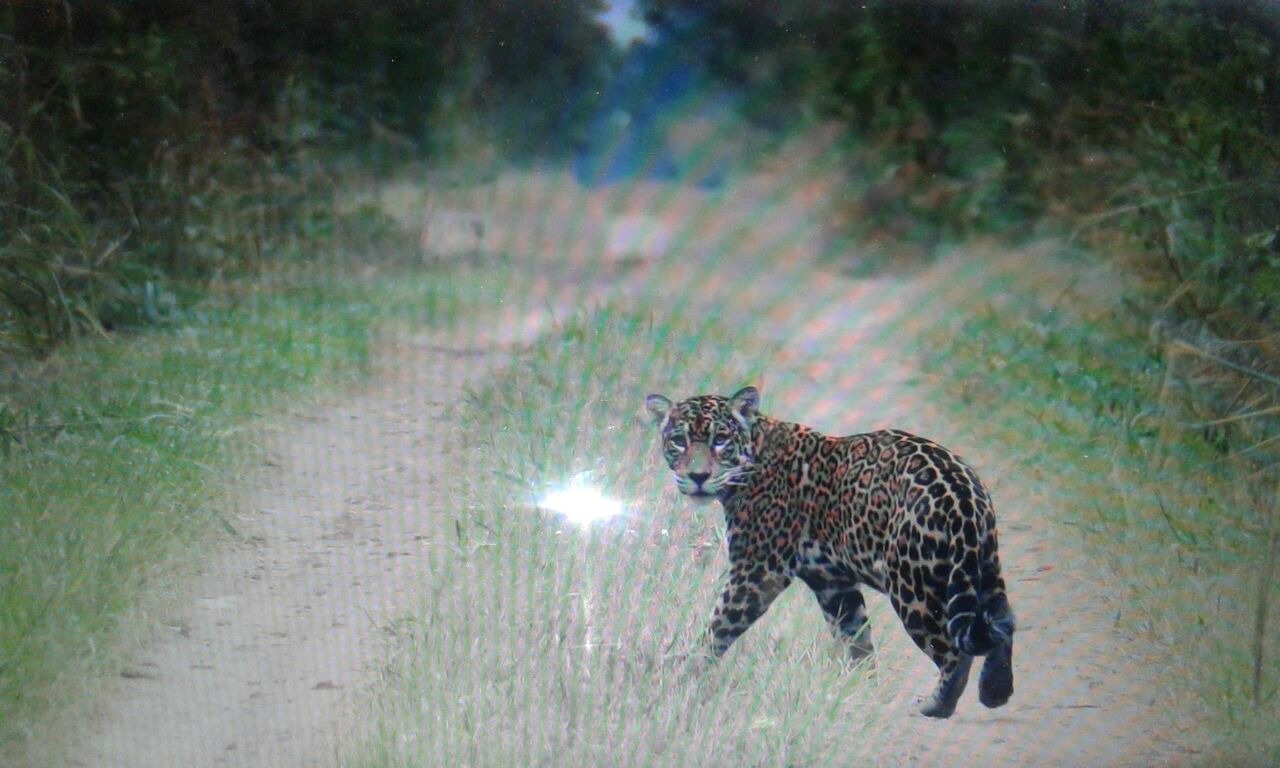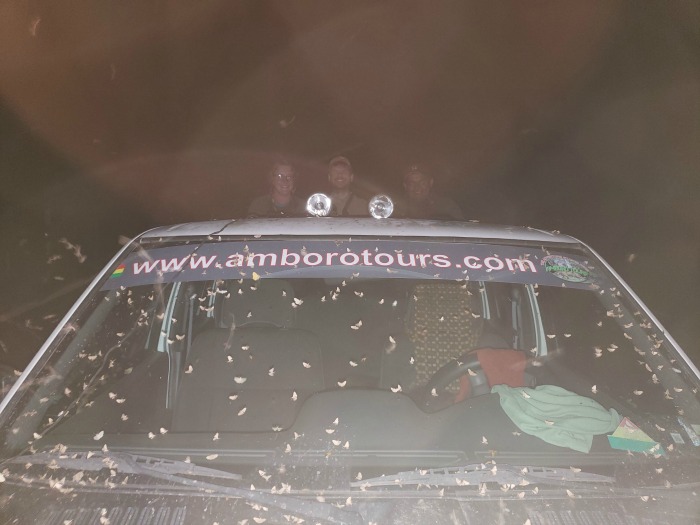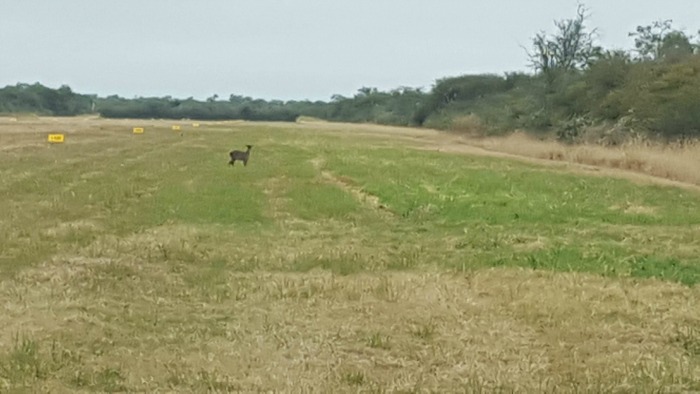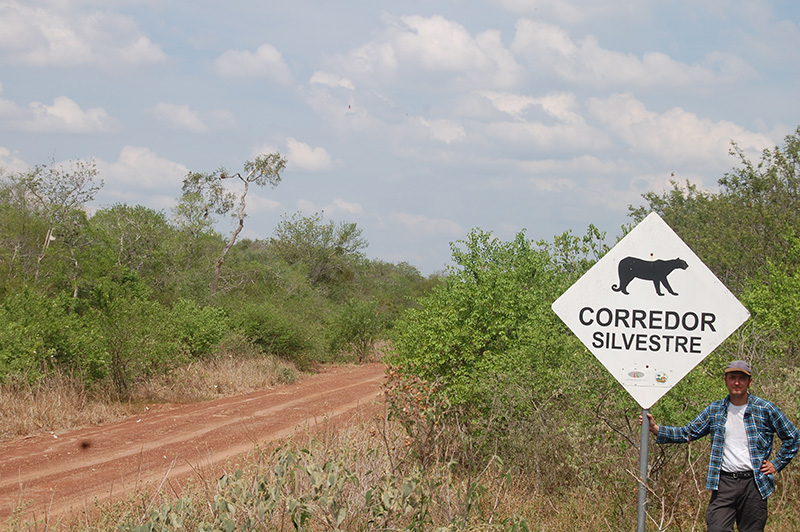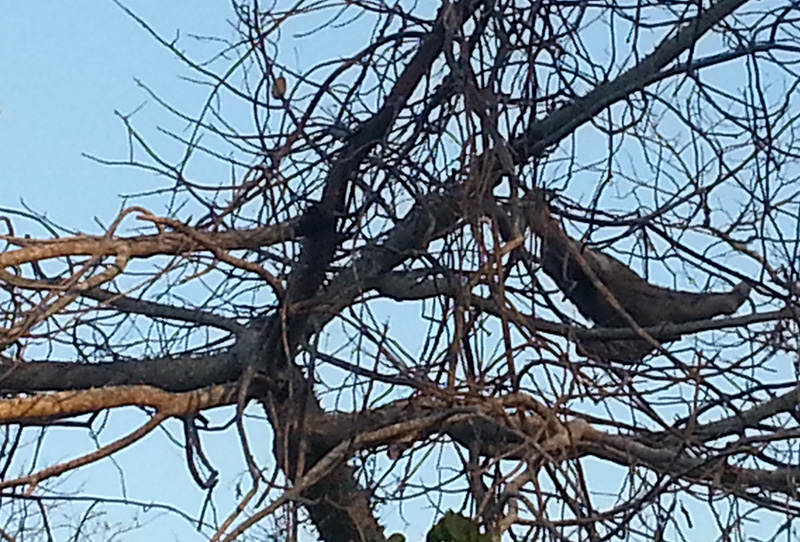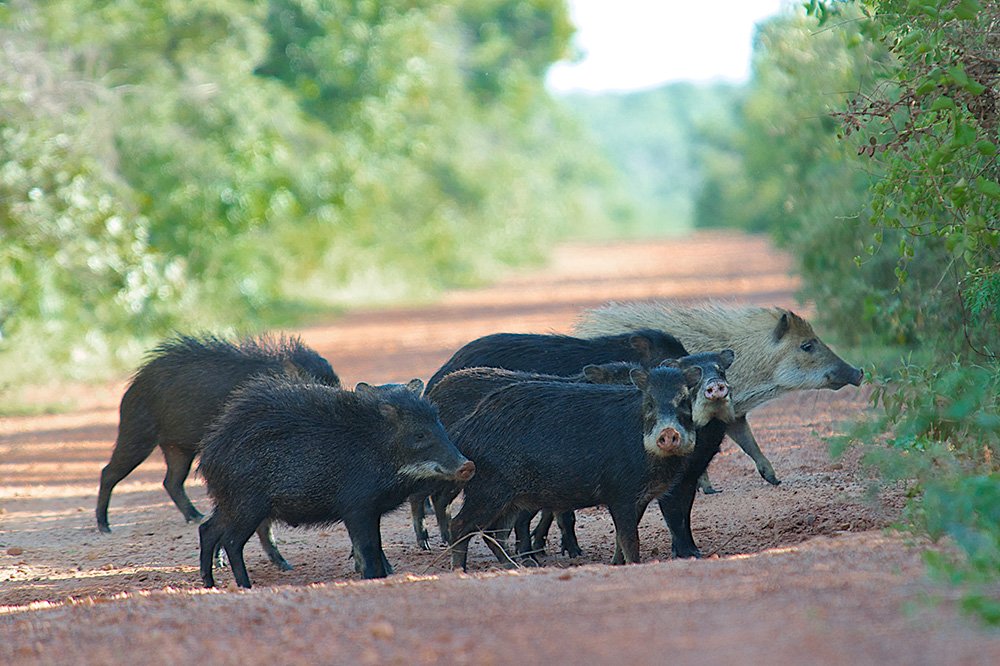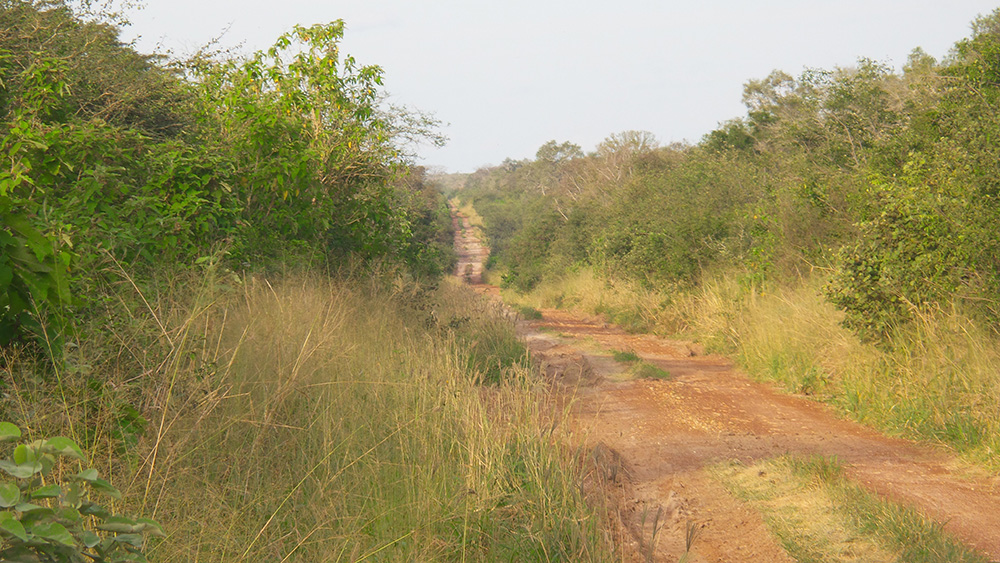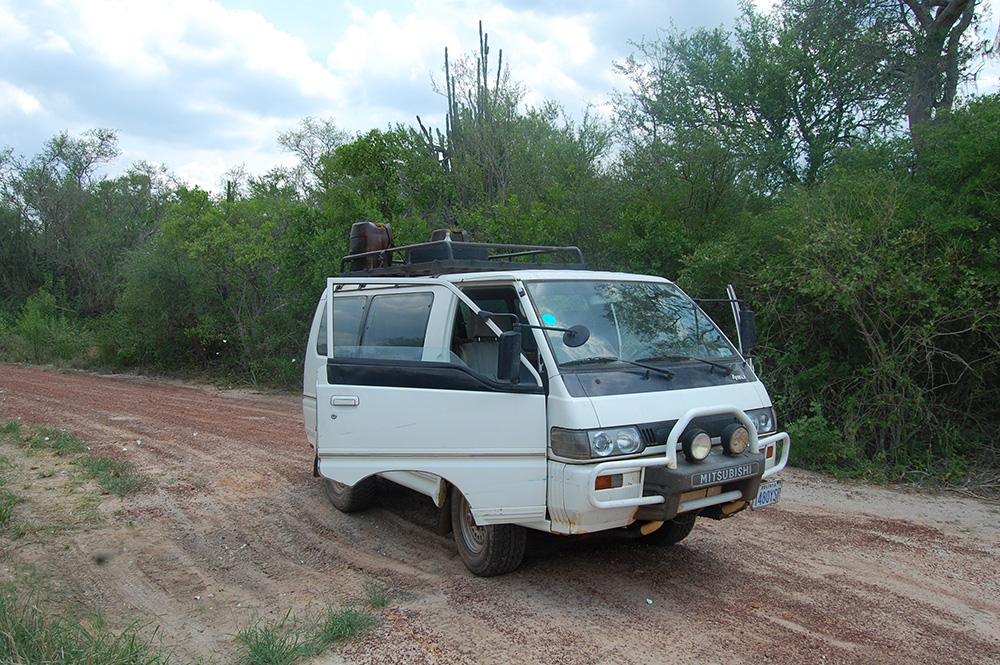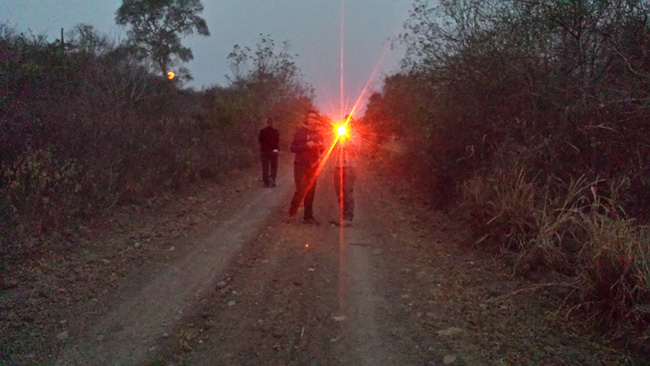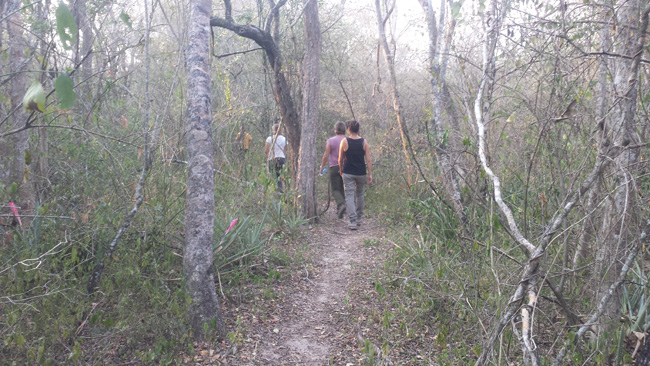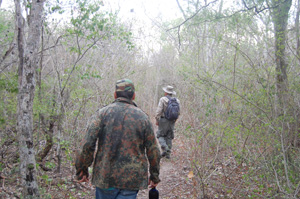Kaa Iya
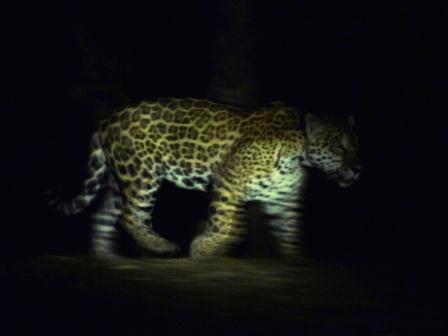
Kaa Iya National Park is located in the southern region of the Department of Santa Cruz, in the Cordillera and Chiquitos Province. The Municipalities involved are Charagua, San José de Chiquitos and Pailón. It is border with the Republic of Paraguay.
This national park is the largest in Bolivia and one of the most biggest in sough America. It was founded by locals natives in the year 1995. Nowadays is one of the forest best preserved in Bolivia and in south America, and the Chaco-Chiquitano forest intact in most of its extension.
Kaa Iya is home of one of the largest number of jaguars, tapirs, guanacos, anteaters and many other wild animals, birds species and plants.
Kaa Iya
National Park
Ecotourism
Eco-Tourism
Eco-Tourism sooner or later it was going to be a reality in Kaa Iya National... The sooner the better because all national park in Bolivia or natural reserves have enormous threats.
It was not easy to convince people in charge of the park to open their minds to this need..But conservationists people with a wide view in Amboro Tours made it happen.
Some trips are offered to Tucavaca entrance. Here the opportunities to observe mammals can be higher than in others parts of Bolivia or South America.
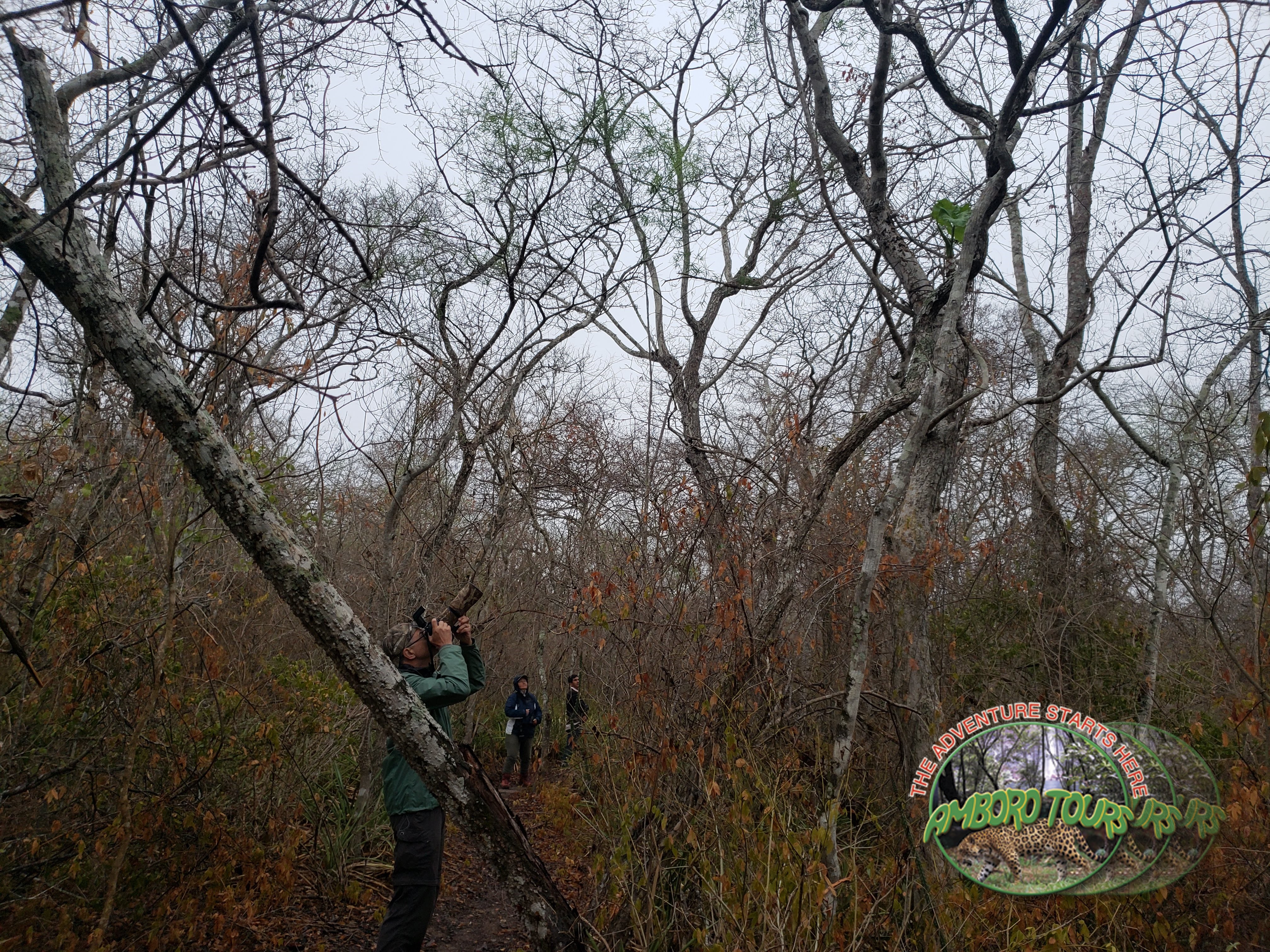
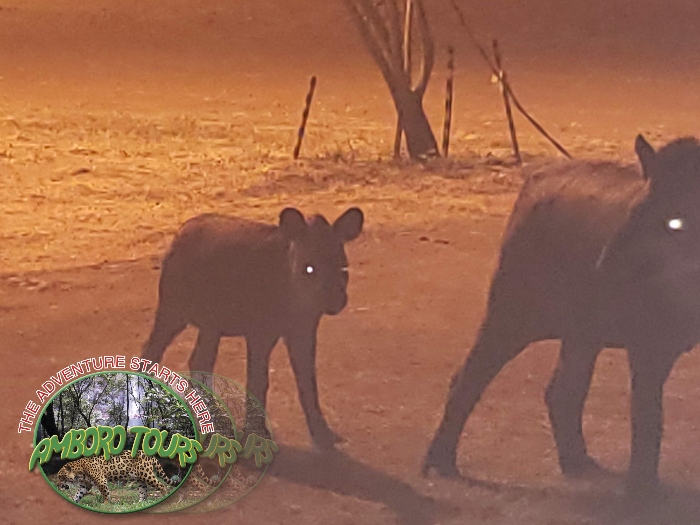
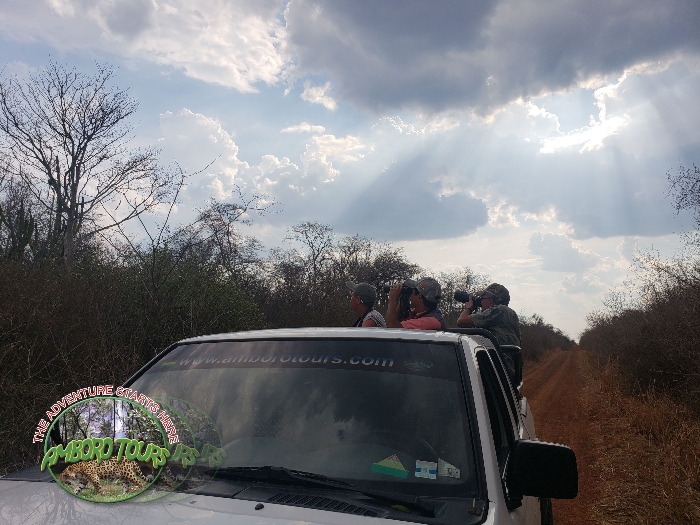
Tours Details
Standard Itineraries:
- 2 Days 1 Night
-3 Days 2 Nights
- Photos
- Videos
- Maps
- What To Bring.....?
Two Days One Night Itinerary
Kaa Iya National Park
From the City of Santa Cruz
2 Days 1 Night
1st Day -
At 08:00 we start the trip towards Tucavaca in Kaa Iya national park. The Tucavaca camp in Kaa Iya park is located approximately at 362 kms from the city of Santa Cruz.
Please may sure you take with your original passport or your country´s I.D. if your country is a member of the MERCOSUR agreement.
Please take with you the small sheet of paper that the control people give you when you enter Bolivia
The road to Tucavaca is asphalted until the population of San Jose de Chiquitos, which is about 265 km from Santa Cruz and the rest of the 362 kms is on a off road.
After leaving the city of Santa Cruz by car you can see large areas of crops mostly soybean and sunflower.
This area is known as the Eastern Lowlands of Santa Cruz. The ground in this area is suitable for agriculture.
After about 2 hours driving you can appreciate from the highway, during a good part of this first journey, the Mennonite colonies exist in large numbers on both sides of the road.
The Mennonites are an ethnic group that is dedicated to to agriculture and they came and still are coming to Santa Cruz from different countries such as Canada, Mexico and Paraguay.
Among these groups of people there are colonies of Mennonites with the most stringent internal rules. They do not allow their members to use electricity. Either they are not allow to use tractors with pneumatic. So they have to be replaced the pneumatic by iron rims adapted by themselves.
There are also Mennonites colonies with internal rules much more flexible but they all live in exclusive communities for Mennonites
During this journey, you can see on the road a variety of wild mammals lifeless beaten by cars. The type of animal more frequently seen dead on the highway are foxes, ant eaters, (Tamandua tetadractyla) armadillos, monkeys and even some times a tigrillo (Leopardus wiedii). Besides domestic ones
It is estimated to arrive at the first part of the journey which is San Jose de Chiquitos at approximately 11:00 hours.
San Jose de Chiquitos´ church has been declared World Heritage Site by UNESCO as part of the Jesuit Missions of Chiquitos.
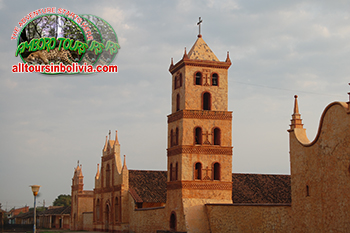
The Jesuits arrived in the area of "Chiquitania" (a term imposed by the Jesuits) on December 31, 1691.
San Jose de Chiquitos was founded in 1696. In 1767 the Jesuits were expelled and taken prisoner by soldiers under the command of the Spanish crown.
After San Jose de Chiquitos we still have to drive to Tucavaca. Three hours or 97 kilometers more down on off road. Almost all this road appears to be stable throughout the year, although in some parts the land is prone to erosion and other parts may become muddy with rain
During the first 15 minutes this road goes by the city´s park “Santa Cruz La Vieja”. And then it is uphill for a while.
In some high points of the road you can see the green of the forest environment and the “Chiquitano” forest with a panoramic view of the town of San Jose de Chiquitos.
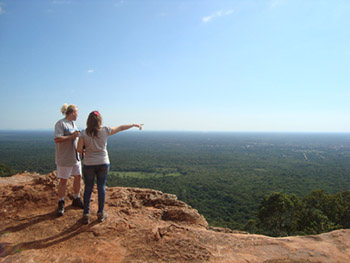
After 3 hours of driving on up down hills and some flat parts all surrounded by a green low forest typical of this part of Santa Cruz.
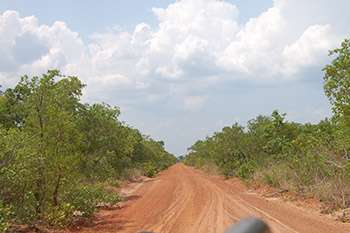
During this drive we have some chances of watching some wildlife.
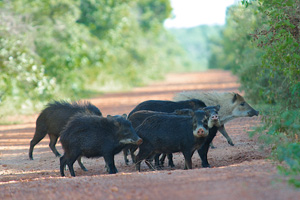
As we approached Kaa Iya park and we start to cross the protection gates, and it is when the possibilities for wildlife viewing are greater.
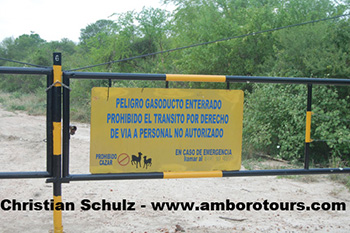
From the first locked gate to Tucabaca Park Rangers site is about 20 minutes going in a low pace. On this road also there are possibilities to watch some mammals
From the first locked gate to Tucabaca Park Rangers site is about 20 minutes going in a low pace. On this road also there are possibilities to watch some mammals
We estimate to reach, the Camp of Tucavaca in Kaa Iya park, at about 16:00 hours
Once in the camp of the park ranger´s we have to give them the entry permission that we brought from Santa Cruz.
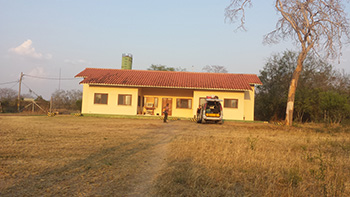
After arrival we are accommodated in shelters built by the community with the support from an NGO. Or we can set up the tents some where near the park rangers base.
Later we start walking or we go by car to the road that runs parallel to the pipeline.
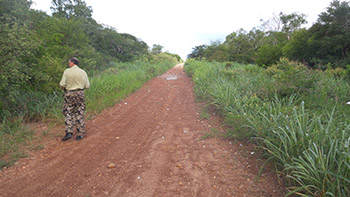
This is some places where you have more opportunities to see the jaguar and others big mammals especially during the warm days, since they like places where the wind flows more easily and cools the hot atmosphere of this part of the Chaco forest.
Some mammals like to lick the mud where the water from a rain gather in some places on the road parallel to the pipeline
During the walk or drive it may get dark so it is necessary to take a good flashlight and insect protection.
Although we recommend you to try to use more clothes protections rather than odour repellents.
Dinner and overnight would be close to the park ranger´s place. Or somewhere in the forest of the park
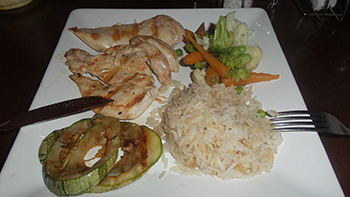
2nd Day - Kaa Iya Tours
Very early in the morning we bound for the city of Santa Cruz.
Breakfast would be before or after starting the trip
Getting out of the park boundaries we still have big chances of watching a Jaguar, Tapires or deers.
It Is estimated to be back in the city of Santa Cruz at 18:00 hours.
Once we return to the city to leave it in your hotel
End of our services. thanks
Three Days Two Nights
From the City of Santa Cruz -
3 Days 2 Nights
1st Day
At 08:00 we start the trip towards Tucavaca in Kaa Iya national park. The Tucavaca camp in Kaa Iya park is located approximately at 362 kms from the city of Santa Cruz.
The road to Tucavaca is asphalted until the population of San Jose de Chiquitos, which is about 265 km from Santa Cruz and the rest of the 362 kms is on a off road.
After leaving the city of Santa Cruz by car you can see large areas of crops mostly soybean and sunflower.
This area is known as the Eastern Lowlands of Santa Cruz. The ground in this area is suitable for agriculture.
After about 2 hours driving you can appreciate from the highway, during a good part of this first journey, the Mennonite colonies exist in large numbers on both sides of the road.
The Mennonites are an ethnic group that is dedicated to to agriculture and they came and still are coming to Santa Cruz from different countries such as Canada, Mexico and Paraguay.
Among these groups of people there are colonies of Mennonites with the most stringent internal rules. They do not allow their members to use electricity. Either they are not allow to use tractors with pneumatic. So they have to be replaced the pneumatic by iron rims adapted by themselves.
There are also Mennonites colonies with internal rules much more flexible but they all live in exclusive communities for Mennonites
During this journey, you can see on the road a variety of wild mammals lifeless beaten by cars. The type of animal more frequently seen dead on the highway are foxes, ant eaters, (Tamandua tetadractyla) armadillos, monkeys and even some times a tigrillo (Leopardus wiedii). Besides domestic ones
It is estimated to arrive at the first part of the journey which is San Jose de Chiquitos at approximately 11:00 hours.
San Jose de Chiquitos´ church has been declared World Heritage Site by UNESCO as part of the Jesuit Missions of Chiquitos.
The Jesuits arrived in the area of "Chiquitania" (a term imposed by the Jesuits) on December 31, 1691.
San Jose de Chiquitos was founded in 1696. In 1767 the Jesuits were expelled and taken prisoner by soldiers under the command of the Spanish crown
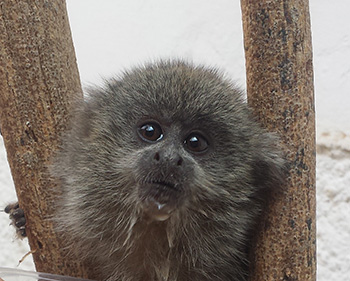
.After 3 hours of driving on up down hills and some flat parts all surronded by a green low forest typical of this part of Santa Cruz.

During this drive we have some chances of watching some wildlife

As we approached Kaa Iya park and we start to cross the protection gates, and it is when the possibilities for wildlife viewing are greater.

From the first locked gate to Tucabaca Park Rangers site is about 20 minute going in a low pace. On this road also there are possibilities to watch some mammals
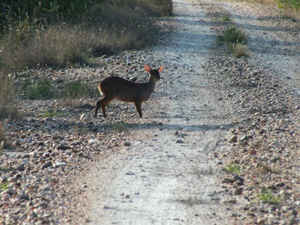
We estimate to reach the Camp of Tucavaca in Kaa Iya N. park at about 16:00 hours.
Once in the camp of the park ranger´s we have to give them the entry permission that we broght
from Santa Cruz

After arrival we are accommodated in shelters built by the community with the support from an NGO. Or we can set up the tents some where near the park rangers base.
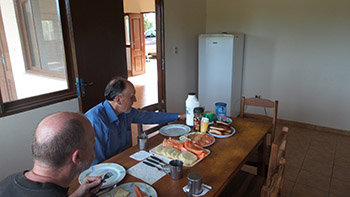
Later we start walking or we go by car to the road that runs parallel to the pipeline.
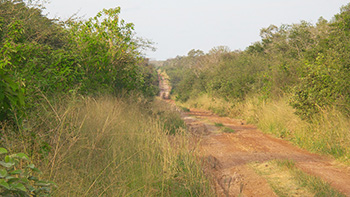
This is some places where you have more opportunities to see the jaguar and others big mammals especially during the warm days, since they like places where the wind flows more easily and cools the hot atmosphere of this part of the Chaco forest.
Some mammals like to lick the mud where the water from a rain gather in some places on the road parallel to the pipeline
During the walk or drive it may get dark so it is necessary to take a good flashlight and insect protection.
Although we recommend you to try to use more clothes protections rather than odour repellents.
Dinner and overnight would be close to the park ranger´s place. Or somewhere in the forest of the park
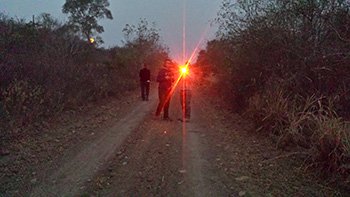
2nd Day - Kaa Iya Tours
We will try to start very early in the vehicle, this will depend on the activities we had the night before. If it possible we will start driving before sunrise, this in order to have a better chances of observing mammals
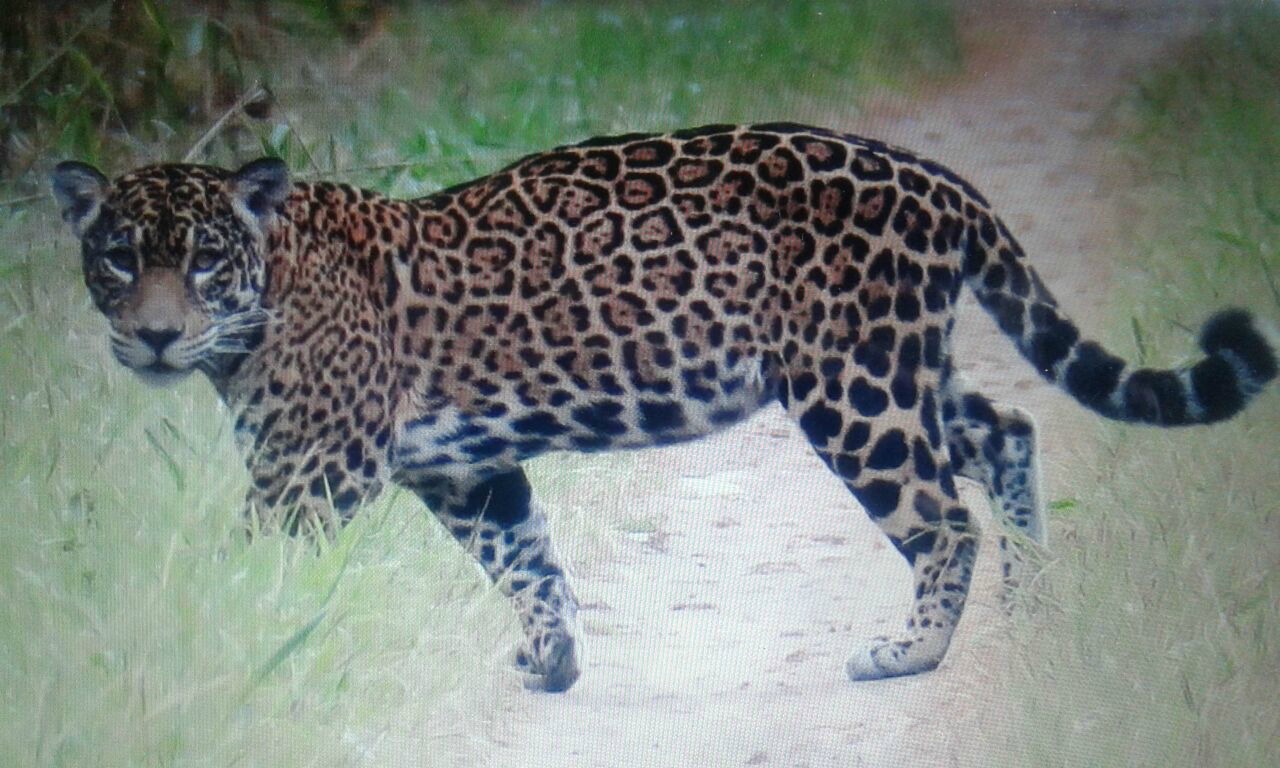
The destinations will be one of the pipeline’s pumping stations on the only existing road which runs parallels to it. On the way we will have great opportunities to see plenty of wildlife, but never guarantee the observation of any animal.
Also is possible go have a short trekking through the virgin forest.
The walk to a little lake called "Laguna Santa Lucia" may takes about 20 minutes to get there. In dry season the lake may get dried
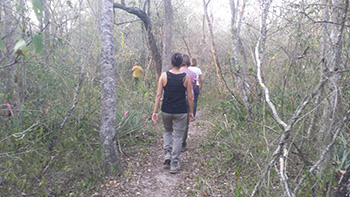
Lunch will be at sometime during the tour in the forest or on the road
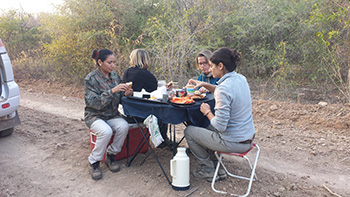
It is estimated to return to Tucavaca at the end of the day.
We may have some walks in the last hours of the afternoon or evening hours.
Dinner and overnight in Tucavaca
3ird Day - Kaa Iya Tours
Very early in the morning we bound for the city of Santa Cruz.
Breakfast would be before or after starting the trip
Getting out of the park boundaries we still have big chances of watching a Jaguar, Tapires or deers.
It Is estimated to be back in the city of Santa Cruz at 17:00 hours.
Once we return to the city to leave it in your hotel
End of our services. thanks
What To Bring..?
What To Bring ?
(DO NOT BRINGS THINGS YOU MAY DO NOT NEED)
1 Day 0 Nights
- Sunscreen
- A Cap or a Hat ( No to be used under the trees or branches)
- Sun Glasses
- A Warm Sweater
- Raincoat
- Swimsuit ( You may not have time to use it in one day tours)
- Insect Repellents
- Long-sleeved shirt- PantsLight colors
Mosquitoes are especially attracted by dark colors)
- Passport (Original) Or identifications documents valid in Bolivia
- Plastic bags to protect whatever you do not want to get wet
- Trekking Shoes or others proper Shoes.
- Bring your own medication for your personal needs
- Personal items you may need
- Extra food, cookies or sweets of your choice
2 or more days – (Besides the items for 1 Day)
Overnight in Tents; Big Back pack, Tent/s, Sleeping Mat, Sleeping Bag, Purification Tablets (for water)
- Mosquito Net for your head (It´s in case you don´t want repellent on your face)
- Toilet paper, Towel and others. Chargers, batteries
- A pair of Sandals and/or light Shoes to walk in streams or rivers
- A hand torch Hand & head lamp with enough batteries
- Enough cloth. And a pair of trousers. It should become shorts and dry fast.
Video - Kaa Iya Tours
Maps - Kaa Iya National Park
Photos Kaa Iya National Park
Home > Bolivia Travel > Kaa Iya
